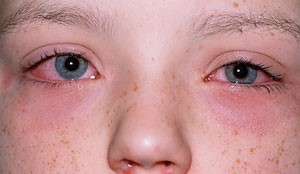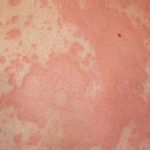Do you have a friend whose child is severely allergic and at risk of Anaphylaxis? Is there a child in your kid’s class? Do your kids love peanut butter and nutella?
Here at KidStart we have heard stories of parents of children with nut allergies and their worry of people not knowing the dangers or what to do and how quickly. So we’d like to invite you to read our four things you should know and watch a lovely video of a dad and daughter showing you what to do.
1. What is Anaphylaxis?
Allergies occur when the body’s immune system reacts to a particular substance as though it’s harmful. Anaphylaxis is an extreme allergic reaction that can result in death. It is a medical emergency and needs urgent treatment. Anaphylaxis usually develops within minutes of exposure so you need to act fast.2. What are the signs of Anaphylaxis?
Initial signs are similar to mild allergies:
- – sneezing and an itchy, runny or blocked nose (allergic rhinitis)
- – itchy, red, watering eyes (conjunctivitis)
- – wheezing, chest tightness, shortness of breath and a cough
- – a raised, itchy, red rash (hives)

- – swollen red eyes, lips, hands and feet
- – feeling lightheaded, faint or confused
- – swelling of the mouth, throat or tongue
- – serious breathing and swallowing difficulties
- – Blue skin or lips
- – abdominal pain, nausea and vomiting
- – collapse and unconsciousness
3. What to do for Anaphylaxis
- 1. Remove the allergen trigger
-
- – If whatever triggered the allergic reaction – the allergen – is still present, remove it
- – Thoroughly clean skin that has been in contact with the allergen e.g. peanut butter from fingers
- 2. An injection of a medicine called adrenaline should be given as soon as possible
-
- – People with a previous history of anaphylaxis will have an Adrenaline Auto-Injector with them (Emerade, EpiPen and Jext are brands prescribed in the UK).
- – Do not wait for symptoms to develop or for someone to arrive.
- – Inject into their outer thigh muscle (works through clothes) and hold in place for 10 seconds. (not easy with a small child so get help if possible)
- – If after 5 to 10 minutes the person still feels unwell, a second injection should be given in the opposite thigh.
- – A second dose may also be given if the person improves but becomes unwell again.
- 3. Call for an ambulance on 999
-
- – Do this whether or not adrenaline has been given.
- – Inform the emergency services that the patient is in anaphylaxis.
- 4. The person should rest
-
- – Ideally get them to lie flat, with their legs raised on a chair or a low table.
- – Adrenaline will raise the heart rate and may cause vomiting or anxiety. These side effects should reduce if they rest.
- – If they are having difficulty breathing, they should sit up to make breathing easier.
- 5. If the person is unconscious
-
- – You should move them to the recovery position – on their side, supported by one leg and one arm, with the head tilted back and the chin lifted.
- 6. If the person’s breathing or heart stops
-
- – Cardiopulmonary resuscitation (CPR) should be performed.
4. What you can do today
The most effective way of helping is being aware if your friend’s or your children’s friends have a serious allergy and helping them avoid exposure. The most common triggers of anaphylaxis are:- – Insect stings – particularly wasp and bee stings
- – Peanuts and tree nuts (Brazil, cashew, chestnut, hazelnut, macadamia, pecan, pistachio, pine nut, almond and walnut)
- – Other types of foods – such as milk and seafood
- – Certain medicines – such as antibiotics

